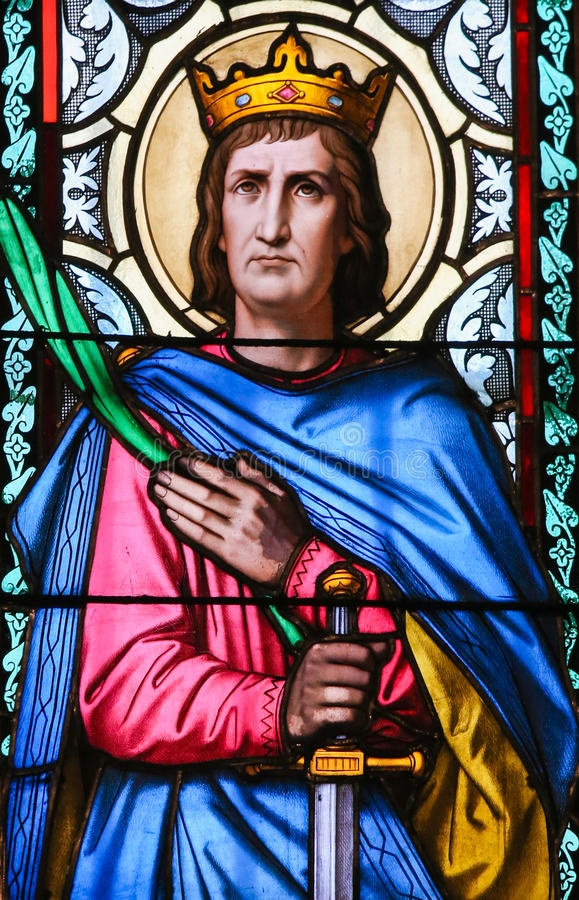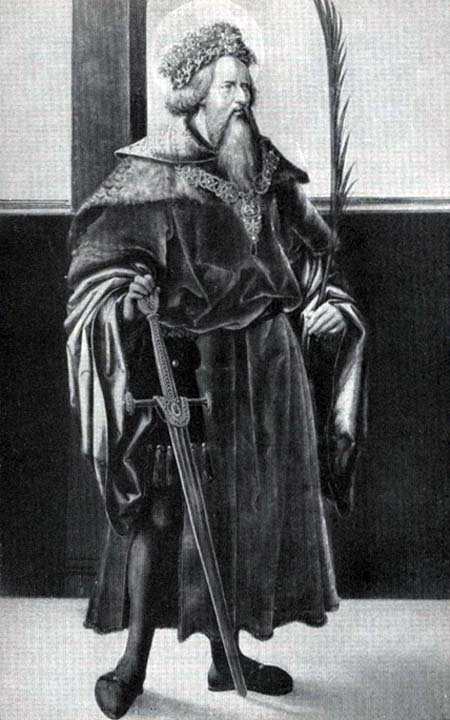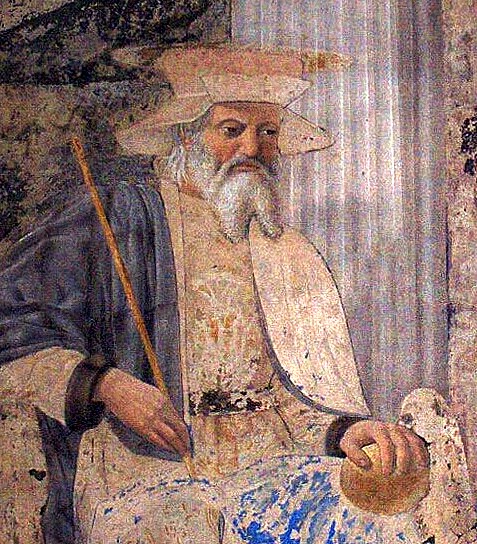Saint of the Day – 1 May – St Sigismund of Burgundy (Died 524) King and Martyr. King of the Burgundians from 516 until his death, Reforemer, Penitent, apostle of the needy and the poor. Patronages – Czech Republic, Monarchs, Germanic peoples, bibliophiles, Monasteries.
The Roman Martyrology states of him today: “At Siom, i Switzerland, Saint Sigismund, King of the Burgundians, who was drowned in a well and afterwards became renowned for miracles.”
Sigismund succeeded his father Gundobad asKking of the Burgundians in 516. At the time, Burgundy was perhaps the most powerful of all the kingdoms of Gaul – not least because of its strong links with the Byzantine court – and both the Franks and the Ostrogoths were keen to limit Burgundian power.
Sigismund soon established his reputation as a statesman and lawmaker by issuing (in 517) a legal compendium, the Lex Gundobada (more properly known as the Liber Constitutionum). He was equally enthusiastic about reforming the Church and, in the same year, he convened a Council of Burgundiam Bishops with a view to establishing ecclesiastical discipline and dismantling the infrastructure of the Arian Church in Burgundy.
Gundobad had been an Arian, though he seems to have contemplated conversion to Catholicism,and Sigismund converted by 515 – thanks in large part to his association with the Catholic Bishop of Vienne, St Avitus (a poet and man of letters who remained a beacon of classical civilisation in a barbarian world), with whom he maintained a correspondence.
Shortly after his conversion, Sigismund founded the Monastery of St Maurice at Agaune, where he instituted the practice of the laus perennis, according to which (as happened in other royal monasteries in the Germanic world) groups of Monks would chant the psalms in relays in an unceasing round of praise (the sixth century equivalent of perpetual adoration).
In spite of such positive beginnings, Sigismund’s relationship with his Bishops deteriorated. Much more seriously, in 522 his second wife persuaded him that Sigistrix, his son by his deceased first wife, was plotting against him with the intention of killing him and taking control not only of Burgundy but also of Italy.
In a fit of uncontrolled rage, Sigismund had Sigistrix strangled. Once his anger had subsided, he was appalled at the enormity of his crime and retired to St Maurice to do penance, devoting himself to the poor in whose service he distributed part of his wealth.
Whatever he undertook by way of reparation, however, seemed wholly inadequate in view of the horrific nature of the murder of his own son and Sigismund came to believe, that only by suffering some equivalent calamity, could he atone for his sin.
Such a calamity duly occurred when Burgundy was attacked by Chlodomer, the King of Orleans, together with his brothers Childebert and Chlothar (the three brothers were the sons of the Frankish King Clovis whose father had been murdered by Sigismund’s father Gundobad). Sigismund escaped, disguising himself as a monk and hiding in a cell at Agaune, but was captured and taken to Orleans as a prisoner where he was executed (524), by being thrown down a well.
His bones having been recovered, a shrine developed at Agaune and he was soon recognised as a Martyr, though strictly speaking he did not die for his faith, as the motives for his assassination had to do with politics and blood-feuds, rather than with Arian persecution of Catholics.
In fact, he is best remembered not primarily as a Martyr (for all that he endured death in a spirit of faith and courage) but as one of the great penitents – as a man whose profound repentance, culiminating in a death, which at some level he seems to have sought (at least in prayer) by way of atonement for his gravest of crimes, was rightly perceived not only by his contemporaries but also by subsequent generations as a paradigm of a particular kind of Christian sanctity.
His body was kept honourably at Agaune, until it was removed to the Cathedral of Prague by the Emperor Charles IV. His tomb has been venerated for centuries and has been famous for many miracles. He became a Patron of the Czech Republic, see his Statue on Charles Bridge in Prague, below.







One thought on “Saint of the Day – 1 May – St Sigismund of Burgundy (Died 524) King and Martyr.”